In May of the year 2005 we celebrated the 60th anniversary of the foundation of the 4th Department of Internal Medicine of the First Faculty of Medicine of Charles University and the General Teaching Hospital in Prague. Pondering on the significance of that event for the past, present and future activities of the institution, we decided to devote next few pages to some facts that could contribute to an objective and impartial view on the events. Before all, we would like to stress that the high standards of professional and human care for the patients have always been considered the most important duty of the Department, together with medical research and education of new generations of healthcare workers. For all of us, continuing in the tradition of the Department remains a permanent obligation.
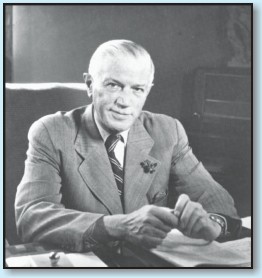
The 4th Department of Internal Medicine came to existence in the memorable May Days of 1945. Describing those events, Professor MUDr. Bohumil Prusík (1886 - 1964), the first Head of the Department, said: "On 9th May 1945, on behalf of the ministry of education, I took over First German Internal Department from its Head Prof. Ruhl. From 5th of May Assoc. Prof. Jonáš had been in charge of the Department by the appointment of the Czech National Council. He supervised the activities trying to prevent the Germans from removing valuable materials from the premises in the last minutes of the war. The following people were present at the take-over: from First Internal Department Assoc. Prof. Lenoch, who also acted as the translator, Ass. Prof. Herfort, Dr. Havlíčková, and Dr. Ladislav Čermák, my co-worker from the Vinohrady Hospital. On our arrival to the First Department, we were expected by Prof. Ruhl and his associate and assistant professors in the office where he conveyed the Department to me. When the instruments he was working with were discussed, he remarked angrily: "I will take them back when we return here." On this occasion I felt sorry to inform the professor that the nazis had murdered my former coworkers and colleagues Miloš Nedvěd, Alexandr Gjurič and Bohumil Havránek.
"On 9th of May the Department was fully occupied by the wounded Germans, who were lying everywhere, even in the corridors on mattresses, so that it was hardly possible to pass through. According to the agreement with our military command, within two days all German soldiers were transferred to prisoner-of-war camps for further treatment. The German physicians left the Department with them. As none of my Vinohrady coworkers was free at the moment, Prof. Hynek was kind enough to offer me the help of his physicians Dr. Herfort and Dr. Havlíčková. With several of our medical students they fulfilled everyday duties carrying out whole rounds each at one half of the department, still working full time at First Internal Department. Their readiness to help is to be remembered and their high standards to be followed.“
The building where the 4th Department of Internal Medicine resides deserves also a few words. Its construction began in 1896, its ceremonial opening was in 1898 on 50th anniversary of the reign of the emperor Francis Joseph I, and therefore it is also known as the "Jubiläumspavilon" or "Musterpavilon". The construction was supervised by the architect V. Nekvasil. In its time the equipment of the building was very modern. In the 40ties of the 20th century the building was reconstructed and an extension to the third and fourth floor added.
On 9th May, which was the first day of the existence of the Department, as physicians of the Department were appointed Ladislav Čermák, Ota Riedl and Václav Skop, next day Jan Hrabáně and by the middle of May Evžen Eiselt, Bedřich Dvořák and František Svatoš. During 1945 the doctors´ collective was joined by Jiří Neumann, Zdeněk Reiniš, František Závodný, Jan Konrád, František Tion, Josef Mašek, Přemysl Pelnář, Matěj Ondrejčák, Antonín Krčílek, Ladislav Volicer and others. Even the future Head of the Internal Clinic of the Hospital Pod Petřínem, Prof. Ota Gregor, worked there for several years. Among the first women-doctors at the Prusík´s Department were Václava Fuchsová and Helena Platilová. Mrs. Hana Kubešová, acting as the secretary till 1986, steadfastly supported the activities of the Department promoting its high standards.
Professor Prusík, the founder of the Department, was a prominent personality in Czech internal medicine. He was born in Klatovy in the family of a professor of classical philology. The family belonged to the oldest ones in Plasko. During his study at the grammar school in Klatovy, he founded and conducted a student symphony orchestra the concertmaster of which was Václav Talich. Prusík had absolute sense of hearing which predestined him to become cardiologist. After graduation at the Prague Medical Faculty, he worked in Prof. Ivan Honl's bacteriological laboratory and then became Prof. Josef Tomayer's assistant. There he devoted himself to clinical research. During his study stay in England, where he worked with the famous internist James Mackenzie, he met the American physician Paul D. White, the future founder and long-term president of the World Cardiologic Society. Both born on the same day, they became friends for life. It was in 1913 when Prusík brought the first cardiograph to Prague and devoted himself to the study of arrhythmia. By the word of mouth, he was the first in Bohemia to recognize myocardial infarction on the electrocardiogram (in 1922). However, when he established this diagnosis and wrote it in a post-mortem protocol for the court councilor Jaroslav Hlava, the famous pathologist called immediately Prof. Thomayer and complained angrily of the clinician's using the terminology of pathological anatomists. Though Prusík was a courageous man, he did not dare to publish the case after Hlava's intervention. The second head of the First Internal Department under whom Prusík worked was Prof. Josef Pelnář. In 1932 Prusík became head of the Department of Propedeutics, where he worked till the closure of schools of higher learning in 1939. During the occupation, he was in charge of the section of internal medicine in the Vinohrady Hospital.

Prusík managed to grasp internal medicine practically in its whole extent, though his main interest belonged to cardiology and angiology. He published more than 200 works, reporting in them on many priority discoveries. He was the first in the world to describe the hyperabduction syndrome (1917) and the initial phenomenon of action muscle potentials (1923), he drew attention to the direct effect of adrenalin on the myocardium (1924) and clarified the symptomatology of neurocirculatory asthenia (1934). The topics of his further studies were unique findings obtained by various examination methods (capillaroscopy, measuring skin temperatures, oscillotonometry, measuring circulation rate). In 1928 Prof. Prusík together with Assoc. Prof. MUDr. Ladislav Volicer published his experience with arteriography which he applied as the first physician in our country and as one of the first ones worldwide. His works on the effects of nicotinic acid on peripheral vessels and those on anti-coagulation treatment with Pelentan (from the 40's ) evoked international response. Prof. Prusík was also one of the first in the world to introduce into the therapy of pain the injection of the stellate ganglion and to apply injections of the Head zones. Prof. Prusík was the head of the 4th Internal Department to 1958.
At that time the Department had 160 beds, a special section for the treatment of vascular diseases and a cardiologic laboratory with an electrocardiograph and an electroencephalograph supervised by Ass. Prof. Jiří Neunam. Ass. Prof. Jan Hrabáně was in charge of the well equipped biochemical laboratory. Among others, to his group of workers belonged also Mrs. Hana Bergerová and Mr. Bohumír Jindra, who worked at the Department for almost fifty years. The head of the X-ray section was Assoc. Prof. MUDr. Václav Skop, and his second in charge Ass. Prof. MUDr. Eva Součková. From the very beginning the Department had a section of dietetic therapy. The food for the patients was prepared in the dietary kitchen located in the basement . This kitchen was a constituent part of the School of Dietetics initiated by Prof. Prusík. Among the school's staff were prof. Gurjičová and later the dietary nurses Mirka Knoblochová, Božena Šanderová and Božena Dynybylová. There was a library for the patients, movie sessions and healthcare lectures. The Christmas Eve round, started by Prof. Prusík, became a tradition kept to the present day. Prof. Prusík with the attending physicians came to the patients who had to stay at the Department during Christmas and wished them a good recovery. Usually there was some music played Christmas carols sung.
The Prusík's Department was visited by some leading foreign specialists, to whom belonged the above mentioned Prof. P.D. White from Boston, Ancel Keysz from Chicago, Ignacio Chávez from Mexico, N.N. Aničkov and A. Mjasnikov from Moscow, Academician Parin, Prof. Iljinskij from Petersburg, Prof. Pudu from Rome. Every year in May the 4th Department organizes an evening of lectures, known as the Prusík Evening, in memory of its first head.
The closest collaborator of Prusík was Prof. MUDr. Zdeněk Reiniš, DrSc. (1914 - 1984). From his first years at the Department he concentrated on diagnosis and treatment of arterial diseases, before all Buerger's disease and the effects of nicotinic acid, carrying out arteriographic examinations together with Assoc. Prof. Skop. Gradually he followed two basic directions in research - experimental study of atherogenesis and epidemiology of cardiovascular diseases. He proved the effect of ecological factors on the course of cholesterol fat in various animal species. At the end of the 50ties, together with Prof. Prusík he started epidemiological research of the risk factors of the ischemic heart disease and the ischemic disease of lower limbs in the country population of the mountain, foothill and plain regions of northern Bohemia, applying the criteria introduced in the USA by Ancel Keys. After ten years Prof. Reiniš conducted a prospective epidemiological study of the population of automobile industry workers for whom he prepared a primary preventive action "Protect your heart". Thanks to Prof. Reiniš, a register of heart infarctions in the district of Mladá Boleslav was set up in 1972. Prof. Reiniš was the chairman of the Czech Cardiological Society and its Angiological Section. At the Faculty he founded the Consulting Committee for Angiosurgery. He was instrumental in organizing both 4th and 11th International Angiological Congress in Prague (1961, 1978). Prof. Prusík, who then became President of the International Angiological Union, was Presisent of 4th Angiological Congress. Prof. Reiniš, as President of 11th Congress, took over the function of the President of the International Angiological Union after Prof. Prusík.
Professor Reiniš became director of the Angiological Laboratory specializing in research of atheroscerosis that was set up instead of the original Cardiovascular Laboratory headed by Prof. Prusík in the years 1957 - 1963. The following specialists worked in the Angiological Laboratory: Assoc. Prof. MUDr. Václav Bazika, CSc., MUDr. Jan Měšťan, MUDr. Eva Stuchlíková, CSc., MUDr. Jana Tišerová, Ing. Karel Marčan and biochemists RNDr. Antonín Heyrovský, RNDr. Jana Horáková, RNDr. Jana Klimešová, and RNDr. Miroslav Šulc. The world-famous histochemist Prof. MUDr. Zdeněk Lojda, DrSc. was the member of the Angiological Laboratory in the years 1961 - 1979, when his activities at the Faculty were threatened for political reasons.
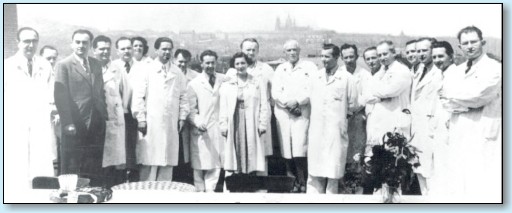
Under the leadership of Prof. Prusík and Prof. Reiniš an angiological school came into existence at the 4th Internal Department deserving credit for setting up angiological units all over the Republic. Assoc. Prof. MUDr. Josef Pokorný, CSc. (1915 - 2003), who was concerned with the diagnosis and treatment of arterial diseases, is to be mentioned as one of the most prominent members of the angiological group. In the research he followed the ever largest set of patients with Buerger disease and together with Prof. Vaněček expounded the histological composition of migrating flebitides. He was also interested in immunological aspects of atherogenesis. As one of the first physicians in the world, in cooperation with Prof. Bartoš from the 1st Department of Surgery he performed ligatures of coronary arteries in dogs and set up prerequisites for the treatment with aortocoronary bypasses, though without the possibility of introducing the method into practice. Assoc. Prof. MUDr. Antonín Krčílek, CSc. (1916 - 1994), the founder of Czechoslovak phlebology, honorary member of many foreign societies, was also an outstanding angiologist. Ass. Prof. MUDr. Dimitrij Zoulek concentrated on the problems of hyperabducting and Raynaud syndrome. Assoc. Prof. MUDr. Václav Skop, CSc. (1916 1967), the Department's rentgenologist, carried out first angiographies in the Republic, MUDr. Oldřich Červený introduced the lymphography method at the 4th Department of Internal Medicine. MUDr. Matěj Ondrejčák, who later became the founder of the Slovak internist angiology in Bratislava, worked also in the angiological group.
From 1985 Assoc. Prof. MUDr. Vladimír Puchmayer, CSc. continued in the angiological tradition of the Department. He worked out the methodology of rehabilitation of patients with arterial and venous diseases that was gradually introduced in the whole Republic. He was the first in our country to measure the Doppler indexes and introduce the systemic thrombolysis of the chronic aortoilic closure as well as to participate in the introduction of the dilatation method for sclerotic arteries by Doter. From the middle of the 80ties, Assoc. Prof. MUDr. Miroslav Bulvas, CSc. with his coworkers (MUDr. Miroslav Chochola, CSc., MUDr. Zuzana Sommerová, MUDr. Renata Urbanová, PhD., MUDr. Petr Vařejka) carried out invasive angiologic interventions at 4th Internal Department. Percutaneous transluminal angioplasty, stent insertion, aspiration thromboembolectomy belonged to routine approaches, newly introduced was the method of farmacomechanical spray thrombolysis. MUDr. Jana Herdová and MUDr. Irena Muchová concentrated on phlebology. For several years after leaving IKEM, Assoc. Prof. MUDr. Jiří Linhart, DrSc. was active in the angiological group. From the very beginning, the clinical workers of the angiological group were aware of the importance of the following and preventive care and therefore cooperated with curative balneologic institutes (Spa Jáchymov, Císařské Spa in Teplice, Sanatorium of the Head Physician MUDr. Baudyš in Konstantin Spa, which is still known as the Prusík Institute).

To envision the Prusík's clinic without cardiology would be almost impossible. In the first two decades the leading cardiologist was Ass. Prof. MUDr. Jiří Neumann. He concentrated namely on the diagnosis of valvular defects and iniciated establishing the cardiosurgical center with the participation of internal and surgical clinics (1st and 4th internal, 1st and 2nd surgical). When he left the clinic, the cardiological section was led by Ass. Prof. MUDr. Jiří Buriánek, CSc. who, forced to emigrate in 1968, passed away abroad tragically after several years. Together with Assoc. Prof. Krčílek, Assoc. Prof. MUDr. Petr Bartůněk, CSc. pursued cardiology. Gradually the cardiological group was joined by Richard Adamec, Svjatoslav Vinogradov and Karel Goričan, later Jindřich Šnobl, Jan Bruthans, Josef Veselka and Vratislav Mrázek. In the eighties, Ass. Prof. Vinogradov and Assoc. Prof. Bartůněk in cooperation with the specialists from the Czech Technical University developed an original equipment for the ECG transfer on the phone (TELSAR).Then Assoc. Prof. Bartůněk focused his attention on the diagnosis and treatment of arrhythmias and in a special outpatient ward concentrated on the patients with the cardiac form of lyme borreliosis. Ass. Prof. Karel Goričan is in charge of the echocardiographic laboratory at the Department, examines arteries sonoghaphically, carries out catheterisation. In the nineties, the former chairman of the Czech Cardiological Society Prof. MUDr. Vladimír Dufek, CSc. worked also at the Department.
At the beginning of the fifties, the research in pathogenesis of arterial hypertension was pursued by Assoc. Prof. MUDr. Evžen Eiselt. Since 1958 the problems of arterial hypertension have been in the center of attention of Prof. MUDr. Adolf Slabý, DrSc. (now professor emeritus of Charles University), Prof. Reiniš's student and one of his coworkers during the research of the ischemic heart diseaese epidemiology and prevention. At the Department Prof. Slabý followed up the patients with renal and vasorenal hypertention, and after his return from the grant stay at the Institute of Cardiology in Mexico he devoted himself to the study of the renin-angiotensin system.
Besides angiology with cardiology, gastroenterology became the second bearing pillar of the Department. As already mentioned, one of Prof. Prusik's coworkers was the gastroenterologist and dietetician Prof. MUDr. Josef Mašek, DrSc., who became the director of the Institute for Research in Nutrition of the Population. However, it is Prof. Fučík, the second in the line of the Department's heads, to be credited for the advancement of gastroenterology at the 4th Internal Department.
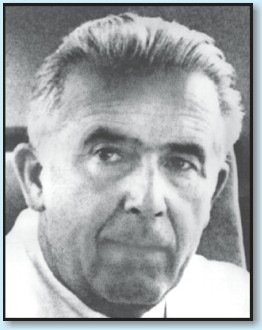
Prof. MUDr. Mojmír Fučík (born 1913, headed the Department of Internal Medicine in the years 1959-1980) had devoted himself to the diagnosis and therapy of gastrointestinal diseases. He introduced endoscopic and other diagnostic methods (he carried out more than four thousand castroscopies himself, using a rigid apparatus) and applied innonative treatment methods. Together with František Thion he performed liver punction as early as 1947. Since 1957 Prof. Fučík had led the Research Gastroenterologic Laboratory, where RNDr. Alena Bolková, DrSc. was working with the lab technician Mrs. Xenia Šlais. The laboratory was engaged in the research of the digestive tract physiology as well as pain pathology and the ethiopathogenesis of the ulcerative disease. Prof. Fučík, who was vice-rector of Charles University, chairman of the Czech Gastroenterologic Society, is to be credited with the publication of several textbooks on internal propedeutics. Besides internal medicine, his avocation was music, namely playing the viola in the chamber quartet. In 2003 Prof. Fučík celebrated his ninetieth birthday at the Department.
A prominent personality in the gastroenterologic group was Assoc. Prof. MUDr. Markéta Jablonská, DrSc. (1920 - 2001). In her research she concentrated on hepathology and gastric secretion and later on the problems of colorectal carcinoma. Working as secretary for science of the Czech Gastroenterologic Society, and after Prof. Fučík as its chairperson, she is to be credited with the organisation of numerous professional events, among others regular Gastroenterologic Days in Karlovy Vary (Karlsbad). Under the supervision of Prof. Fučík a number of excellent gastroenterologists appeared at the Department, among them Ass. Prof. MUDr. Jiří Kohout, Ass. Prof. MUDr. Josef Pražák, Ass. Prof. MUDr. Roman Ronský, Ass. Prof. MUDr. Miloš Svitavský (deserving merit for creating a modern diagnostic section in the years 1986 - 7), Ass. Prof. MUDr. Tomislav Švestka, Ass. Prof. Karel Hrubant, Ass. Prof. Ludmila Řezníková, Ass. Prof. Irena Šindelářová, Ass. Prof. Akis Stamidisa and others. In the 80ties the team was joined by Assoc. Prof. MUDr. Jan Kotrlík, CSc., in the 90ties the head-physician Karel Lukáš, CSc., Assoc. Prof. Milan Lukáš, CSc., Ass. Prof. MUDr. Tomáš Krechler, CSc., and MUDr. Martin Bortík, who were introducing new endoscopic methods. The sonographic method became the field of special interest of Assoc. Prof. MUDr. Miloš Dvořák, CSc., and Ass. Prof. MUDr. Renata Šroubková. According to Prof. Fučík's conception, an internal department should have all basic sub-specialties of internal medicine. Gastroenterology is closely related to dietology which became the life-long professional interest of Assoc. Prof. MUDr. Přemysl Doberský and Assoc. Prof. MUDr. Květa Soukupová. Pneumology became the field of Assoc. Prof. MUDr. Hana Todorovičová, CSc., nephrology of Prof. MUDr. Slabý, DrSc., hematology of Ass. Prof. MUDr. Ladislav Čermák, Assoc. Prof. MUDr. Hana Pstružinová, CSc., Ass. Prof. MUDR. Marie Došková and Ass. Prof. MUDr. Oldřich Loutan.
Mr. Václav Richtr, the head lab technician, cannot be ommited from the list. Rheumatology was represented by Assoc. Prof. MUDr. Ota Riedl, CSc. (1915 - 1983), who was also concerned with clinical pharmacology and toxicology (together with Prof. Vladimír Vondráček he published a concise monograph "Clinical Toxicology"). For long years, Assoc. Prof. Riedl, an internist with a broad range of vision, held the office of the deputy-head of the Department. At the same time he was the member of the executive commitee of the Czech Medical Society of J.E. Purkyně as well as the chairman of the Internists' Society, the managing editor of the Prague Medical Report and the Journal of Czech Physicians.
For many years the excellent endocrinologist Assoc. Prof. MUDr. František Tvaroh, CSc. (1906 - 1991) worked at the Department as external consultant and teacher in close cooperation with Ass. Prof. MUDr. Ladislav Krejčík. The work in the field of clinical endocrinology was resumed by Assoc. Prof. MUDr. Jarmila Hrušková, CSc. and Ass. Prof. MUDr. Vlasta Mlatečková.
An obesitologic worplace was set up at the Department by Assoc. Prof. MUDr. Vojtěch Hainer together with Ass. Prof. MUDr. Marie Kunešová and Assoc. Prof. MUDr. Vladimír Štich, PhD. This facility maintained a close and active cooperation with the outstanding specialist in dietology Assoc. Prof. MUDr. Jana Pařízková, DrSc. The construction work at the obesitologic unit with a special examination room and beds was finished in 1985. In the 90ties the unit was transformed into the Center for Diagnostics and Treatment of Obesity of the Geneal Teaching Hospital but the bed unit was closed. In 1997 the obesitologic center was transferred to the 1st Internal Department, and since 2002 it has been the constituent part of the Institute of Endocrinology in Prague with Assoc. Prof. Hainer as its director.
Within the framework of the Faculty, Fourth Internal Cathedra (university chair) was established with the purpose of participating in the organisation of the study program. All pedagogical workers of 4th Internal Department became members of the newly constituted university chair and as teachers devoted plenty of their spare time to the education of medical students, quite often to the detriment of their other duties. Third year students came to the Department once in four years and stayed there to the final state examination. The whole third year was allotted to internal propedeutics, the fourth and fifth year to particular specialties of internal medicine and the sixth year students fulfilled the duties of interns. Furthermore, the Department was involved in education of foreign students as well as in supervising special interest student groups whose members were presenting the results of their work at various student-research conferences. Within the framework of post-graduate education, the Department became the training place for the graduates in doctoral programs as well as for head-physicians of internal departments of the Central Bohemian Region. Attention and care were given to practical training of future nurses and rehabilitation workers.
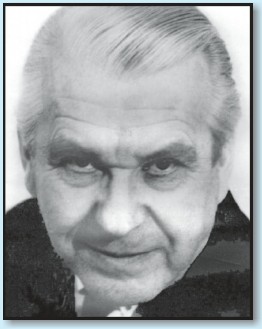
The successor of Prof. Fučík was Prof. MUDr. Jiří Skořepa, DrSc. (1921 - 2003), who had worked at the Department from 1949 and was its head in the years 1980 - 1986. Prof. Skořepa laid the foundation for the third bearing specialty of 4th Department, namely lipidology. He was an experienced internist and pedagogue, interested also in tropical medicine, but with his main concern pointing to scientific research. In his pioneer studies he concentrated on the kynetics of enzymes, metabolism of fatty acids and the role of lipids in atherogenesis and pathogenesis of malignant tumors. As one of the first clinicians he used modern computation techniques for data processing. He was honorary member of numerous foreign scientific societies and was awarded the commemorative medal of Humboldt University.
At the Department, Prof. Skořepa was in charge of a special inpatient ward for the lipid metabolism disorders that he founded in 1972 and the Research Laboratory for Lipid Analysis (from 1980), to the staff of which belonged Ing. Přemysl Mareš, CSc. and RNDr. Eva Tvrznická, CSc., and later among other biochemists Ing. Edita Šindelková and RNDr. Alexandra Písaříková. At the beginning of the 80ties it became evident that the existing organisation of the treatment and care providing became inconsistent with the requirements of the latest times. Urgent need of intensive care became obvious. With extraordinary energy Assoc. Prof. MUDr. Petr Bartůněk, CSc. took this task and a modern Intensive Care Unit with 8 beds could be opened in 1983.
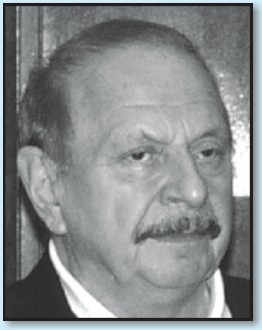
After Prof. Skořepa one of his students, Prof. MUDr. Petr Hrabák, DrSc. took over the management of the Department (born 1933, head in the years 1986 - 1990). He continued in clinical studies focused at the diagnosis and therapy of lipid metabolism disorders, including bile lipids, and was interested also in the role of oxygen radicals. During his management years, a wide-scope reconstruction of the Department was begun thanks to the iniciative of Assoc. Prof. Bartůněk. The Department remained fully operational while the rebuilding continued until 1990, when a large Section of Acute Medicine was opened. Included in the Section were three units of intensive care-coronary, metabolic and angiologic (the only one in the Czech Republic).
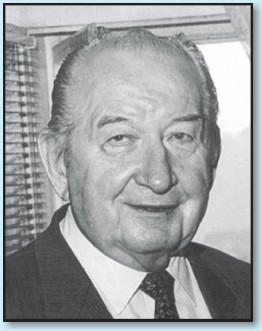
In September 1990 Assoc. Prof. MUDr. Vladimír Puchmayer, CSc. (born 1929) won the competition for the position of the Head of 4th Department, thus becoming the fifth in line of the Department's Heads and remaining in charge up to 1995. As already mentioned, Assoc. Prof. Puchmayer belongs to prominent angiologists of the Prusík's school. He has very good contacts in the German Federal Republic established there many years ago during his study stay. In 1993 he founded an independent Czech Angiological Society and became its first chairman. In 1997 together with Prof. Alegra from Rome he founded the Central European Vascular Forum and became its first president. He was also president of its first congress held in Prague a year later. At 4th Internal Department, Assoc. Prof. Puchmayer was in charge of the Research Angiological Laboratory. There worked also Assoc. Prof. MUDr. Josef Hladovec, CSc., whose publications on venous and arterial thrombosis are often cited in foreign literature as well as his original method of counting desquamated endothelia in blood. The main subject of research at 4th Department was the role of homocystein and oxygen radicals in atherogenesis. The sponsorial donation of the Arc-A Philips angiograph put to operation in 1993 was a significant contribution to clinical angiography. The Department also obtained (as a gift from The Vltava River Basin and The Morava River Basin) a hyperbaric chamber and thus in 1993 the section of hyperbaric oxygenotherapy could be opened, mainly for the treatment of trophic arterial defects. Responsible for this section was MUDr. Vladimír Doležal, CSc., a specialist with a long experience, and after him MUDr. Jitka Zapletalová. In 1993 the ergometry section with up-to-date equipment was added to the 4th Department. Among the section's staff were MUDr. Jaroslav Větvička, MUDr. Ing. Lubomír Poušek and psychologist PhDr. Blanka Čepická.
At the beginning of the 90ties, 45 physicians, 7 scientific workers, 90 nurses and lab technicians were working at the 4th Department. The head of the Department had 3 vice-heads, for health care providing and prevention (head-physician MUDr. Svatoslav Vinogradov), for education (Prof. Slabý) and for science and research (Assoc. Prof. Bartůněk). After the head-physician Vinogradov, the position was taken by MUDr. Vratislav Mrázek, CSc., succeeded by the present head-physician MUDr. Karel Lukáš, CSc. The head nurse of the Department was Miluše Dvořáčková, d.n. as the successor of Helena Všetečková, d.s.
Let us name at least some of the large number of highly qualified and devoted nurses that worked at the Department in the past: Růžena Atanasová, Jitka Bártíková, Hanka Hofbauerová, Ivana Hudlová, Jarka Jirků, Valina Kálalová, Milena Krechterová, Ivana Lukášová, Hana Nováková, Maňa Novotná, Jarmila Pešková, Vlasta Rubešová, Tylda Řečíková, Věra Steinhauslová, Ema Šťastná, Růžena Truková, Líba Vintrová, Anina Volšanská. The positions of the head lab-technicians of the biochemical laboratories were held successively by Mr. Vladimír Bárta, Mrs. Marta Kolíševová and Mrs. Jana Mluvková. For long years Mrs. Naďa Kábrtová was taking care of the library, and after her the present librarian and documentalist Mrs. Stáňa Eichlerová. Mrs. Miluška Pražanová and Mrs. Miluše Pálová worked in the secretariat, and in the archives Mrs. Marie Vavroušková. From the start, the component part of the Department was the well equipped Rehabilitation and Physical Center, tenderly cared for by the nurses Brigita and Mařenka Homolková and Anička Borovičková. Later on, rehabilitation workers Jana Hromádková, Svatava Novotná, Táňa Němcová, Anna Matějková and others took over the care of the Center.
In 1980, the self-contained Section of Rehabilitation Medicine was established and was led by the head-physician MUDr. Alena Škachová.
The Radiological Section, which became a part of the Radiodiagnostic Department at the end of the 70ties, were the premises where the following physicians worked: Assoc. Prof. MUDr. Václav Skop, MUDr. Jan Konrád, Ass. Prof. MUDr. Eva Součková, Ass. Prof. MUDr. Pavel Teisinger, Ass. Prof. MUDr. Milena Míková, Ass. Prof. MUDr. Hana Hergetová and MUDr. Jaroslav Tabach. Of the lab technicians working there we can name Mrs. Věra Hampacherová, Mrs. Mirka Knoblochová, Mrs. Naďa Žáková and Jarka Vlašimská.
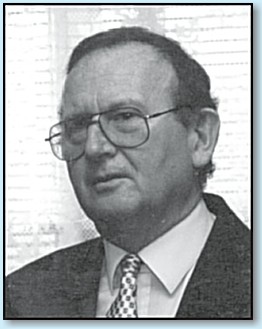
After Assoc. Prof. Puchmayer, the charge of the Department came to Assoc. Prof. MUDr. Petr Bartůněk, CSc. (born 1939, head 1995 - 2000), cardiologist and specialist in intensive medicine, whose professional and organisational activities have already been mentioned. Assoc. Prof. Bartůněk was introducing scietific methods of management based on system analysis and worked at extending the computer network. In the years when Assoc. Prof. Bartůněk headed the Department, the process of restructuring the specialty field of internal medicine was under way in the General Teaching Hospital. As a result of that process, the program preferences at the 4th Internal Department were given to hepatogastroenterology, whereas angiology was transferred to the activities of the cardiologically oriented 1st Department. Meanwhile, at 4th Department the hepatogastroenterologic center, which had been gradually created, has become one of its kind at the whole First Faculty of Medicine of Charles University and the General Teaching Hospital. Joined to the Department was the gastroenterologic unit of the Polyclinic at Charles Square that was reconstructed and, thanks to the sponsors, successfully turned into a top diagnostic facility with the latest equipment (opened in 2000). The integration process was complete when the following specialists from 1st Internal Department came over to 4th Department: Prof. MUDr. Zdeněk Mareček, DrSc., Assoc. Prof. MUDr. et RNDr. Jiří Beneš, CSc., Assoc. Prof. MUDr. Radan Brůha, CSc., Assoc. Prof. MUDr. Milan Kaláb, CSc., MUDr. Jaromír Petrtýl, CSc., Assoc. Prof. MUDr. Petr Urbánek, CSc., and Assoc. Prof. MUDr. Libor Vítek, PhD.
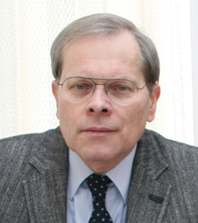
Since December 2000 the head of the 4th Department has been Prof. MUDr. Aleš Žák, DrSc. (born 1951). He has been working at the Department from 1976, from 1995 has been in charge of the Research Angiological Laboratory, and in the years 1995 - 1999 of the Intensive Care Unit. Prof. Žák belongs to the leading specialists in the field of experimental and clinical lipidology. He is concerned with the problems of dyslipidemia, fatty acids metabolism, homocystein and oxydation stress in relation to atherosclerosis. The collection of his publications on the influence on nutritional factors on the lipid and glycid metabolism was awarded the National Prize of Prof. Charvát for the year 1994. At present, Prof. Žák pursues the research of lipid metabolism in nutritional disorders, in connection with intensive metabolic care and nutritional support, follows also interactions of dietary and genetic factors in pathogenesis of atherogenic dyslipidemia. As the Head of the Department, Prof. Žák tries purposefully to achieve a higher level of diagnostics and treatment in the whole field of internal medicine. With his coworkers he succeeded in the application of measures for improving the economic effectiveness of clinical work. In contrast to the past, in the last three years positive economic results were being achieved.
We would like to finish our short history of the 4th Internal Department quoting the words of Prof. Bohumil Prusík delivered at the celebration of its tenth anniversary in May 1955: "For the coming years I wish to all of you and to our precious Department ever lasting success in science and curative care, permanent improvement and modernisation of the equipment, happiness and joy of work done well. I wish this facility became the cradle of the best work for our Faculty, for our patients, for the good of the Czech nation."

